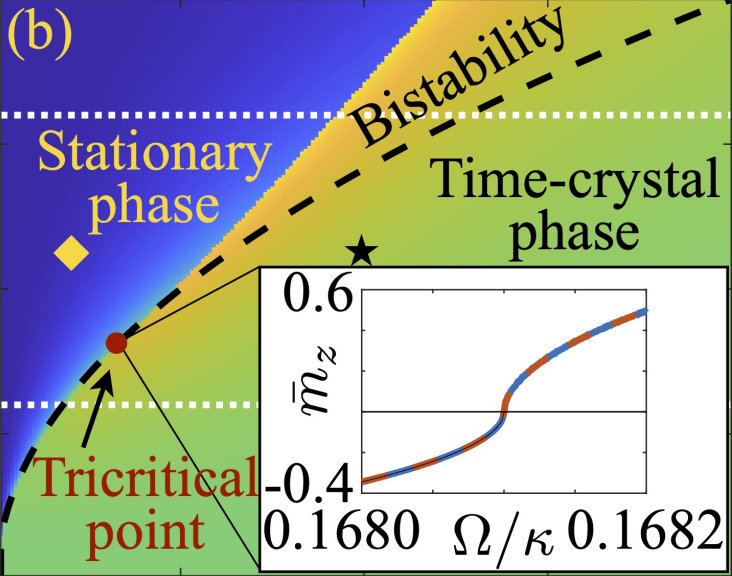Exploring the Quantum Frontiers: Time Crystals in Light-Matter Systems
In a groundbreaking study recently published, researchers have delved into the intricate behaviors of an open quantum light-matter system, unveiling the conditions under which a novel phase of matter known as a time crystal can emerge. This research, conducted by a team of physicists, offers a profound glimpse into the non-equilibrium dynamics of quantum systems and could pave the way for advancements in quantum technologies.
Unveiling the Phase Diagram
At the heart of their findings is the detailed phase diagram illustrated in Figure 1(b) of the study. This diagram maps out the transition between different quantum states within the system—specifically highlighting the shift from a stationary phase to a time-crystal phase. In the stationary phase, the system exhibits a constant magnetization over time. Contrastingly, in the time-crystal phase, the system demonstrates persistent oscillations, a state where time-translation symmetry is spontaneously broken.
The diagram specifically indicates a bistable region where both phases coexist, terminating at a critical tricritical point where the nature of the transition changes from first to second order. This tricritical point, identified at coordinates (Ω/κ,λ/κ)≈(0.17,0.41), marks a significant shift in the system’s behavior, reflecting the delicate balance of quantum forces at play.
Quantum Correlations and Entanglement
One of the most intriguing aspects revealed by the study is the presence of quantum correlations in the time-crystal phase. These correlations indicate collective entanglement between the atoms and the light field within the system. This finding is crucial as it suggests that time crystals can sustain quantum properties that are more complex than previously thought, challenging the notion that these phases might be merely high-entropy, classical states.
Implications for Quantum Technology
The research offers a new theoretical framework for understanding how quantum correlations can exist in dynamic non-equilibrium conditions, which is key for the development of future quantum technologies. The ability of time crystals to exhibit sustained oscillations and quantum entanglement could lead to novel applications in quantum computing, sensing, and information processing, where maintaining quantum coherence over time is crucial.
Future Directions
This study not only broadens our understanding of quantum phase transitions in non-equilibrium systems but also sets the stage for experimental investigations into the use of time crystals in practical quantum applications. As researchers continue to explore these phenomena, the quantum landscape will undoubtedly yield even more fascinating discoveries that could revolutionize our technological capabilities.
Mattes, R., Lesanovsky, I., & Carollo, F. (2023). Entangled time-crystal phase in an open quantum light-matter system. Institut für Theoretische Physik, Universität Tübingen.

